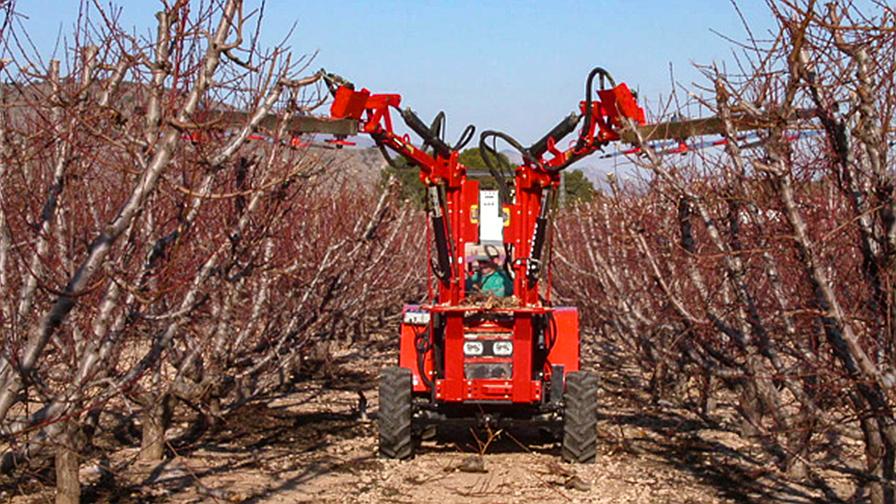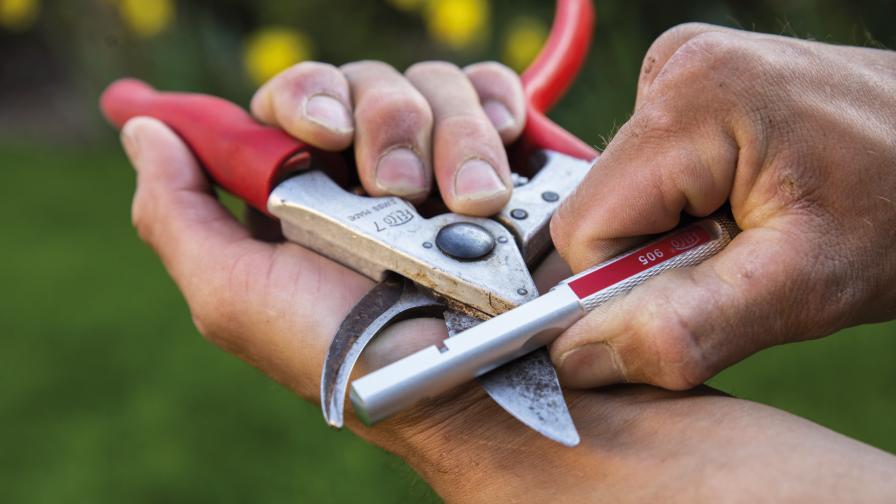Are You in Need of Orchard Equipment? Act Now

Mechanical pruning is here to stay, and growers should learn to adapt to the technology.
Photo courtesy of Vine Tech Equipment
For orchard/vineyard equipment companies and their customers, there is no getting around the nation’s ongoing supply chain issue.
The problem “seems quite severe,” according to Ryan Amberg, the General Manager of Pygar USA, a Felco Group Company. Raw material costs are at nearly an all-time high for aluminum and steel, he says, and shipping costs are greatly increased. Specifically, he cites ocean freight, with costs more than tripling in some cases, and drayage (transport from port to warehouse), which faces similar price hikes.
What this means for grower-consumers is higher prices and less-consistent supply, Amberg says.
“I would expect customers to see over the next year around a 5% to 10% increase in input costs over the course of the year,” he says.
In turn, Switzerland-based Felco has been focusing its human resources more so on maintaining strong market level stocking, Amberg says, while also investing more in its local Swiss manufacturing capabilities to ensure a steady supply situation despite higher demand than ever. The company, he adds, is holding pricing as long as possible to wait for market normalization before absolutely having to increase any prices.
“We also have been shifting some of our internal budgets to compensate for increased amounts of airfreight shipments to make absolutely certain we are doing our part to keep our professional users working with our tools and well supplied with parts, as we are expecting logistics bottlenecks out of our control.”
Grant De Vries, the Sales Manager with Vine Tech Equipment, says most equipment and parts are still reaching their destinations, although delayed by four to six or more weeks.
“Some equipment is delayed more or unavailable because of missing one or more components to finish,” he says.
Vine Tech is responding by increasing its inventory and submitting orders “earlier than we ever have,” De Vries says. Customers should follow suit, he recommends, and plan further ahead on equipment and parts needs and order as soon as they realize they will need them.
For better or for worse, this is familiar territory for Amberg.
“Last year I was saying the same thing as Felco was facing an increased demand due to more consumers researching their purchases due to the COVID shift of shopping online,” he says. “This drove Felco business significantly and led to us having some of the first shortages of core products in my history with the company. This year demand is not slowing at all, but the costs of logistics hikes and raw material input increases will start to drive prices up in the market as has already been seen in 2021.”

Quality equipment, which requires less repair, maintenance, and replacement, reduces input costs over the long haul.
Photo courtesy of Felco
GROWER TIPS
Meanwhile, life goes on in the orchard and vineyard. De Vries advises growers to prepare now for mechanization in the field.
“Even if you feel like you don’t need to make the jump into mechanical pruning, start learning about it from other growers and the suppliers,” he says. “Or have someone custom-prune some for you so that you can learn and prepare for when you need to make the purchase.”
Trellis and cultural practices will likely need to be modified to improve or accommodate future equipment, De Vries says.
“You need to be ready to change what your plant ‘should’ look like. You will need to be willing to change your perspective of what a plant should look like after it is pruned,” he says. “You may have to accept a few more undesirable spurs in a vineyard or maybe sacrifice some fruiting wood in an orchard.”
With field staff in mind, Amberg says growers should provide comfortable and ergonomic tools to fit individual needs and improve worker health by reducing repetitive motion injury.
“This also improves efficiency by reducing fatigue,” he says. “By reducing fatigue and improving the health of the workforce, you will promote better efficiency and productivity out of your in-field staff.”
While in the short term a farm manager might feel disincentivized to pay more for these ergonomic and longer-lasting products, in the mid to long term this will pay back in dividends, Amberg says, not only for the points mentioned above, about heath and productivity, but even in input cost.
“This happens through the ability of tools to be repaired and maintained, keeping the cost of ownership lower over time,” Amberg says. “Instead of having to replace tools season after season, like some products in the industry, you can maintain and replace parts and keep tools for years, decades, and even life if well looked after.”










